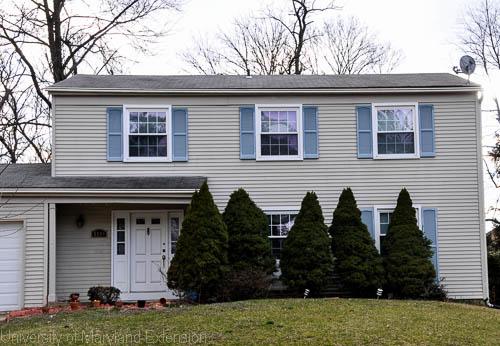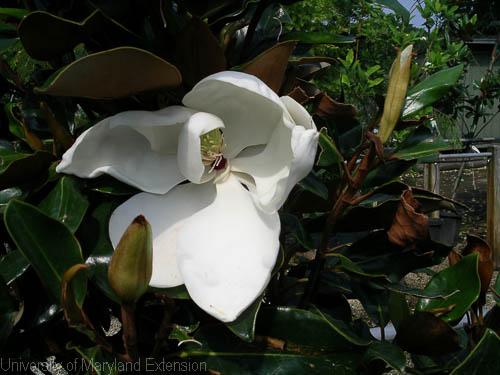Select an appropriate tree or shrub for the site

- Determine how big the tree or shrub will get when mature before you purchase and plant it. This step can save you the job of removing the tree or shrub in the future that has outgrown the location.

- Always choose top-quality plants. End-of-season sales may sound like a good deal. But if those plants have been sitting out in a parking lot for 2-3 months in the heat without adequate water, you might be buying plants that will not grow well and might be susceptible to insect and disease problems.
- Select disease or insect-resistant varieties of ornamental plants. Contact Ask Extension to get advice or contact your local Cooperative Extension Service.
- Be aware of the utilities above and below ground. Plant large shade trees well away from power lines. Underground utilities are also in danger of damage from invading roots. Always contact Miss Utility (1-800-257-7777) before planting.
What is the tree's purpose in the landscape?
- Trees and shrubs provide shade, block unsightly views, and provide interest with their flowers, fruit, foliage, and attractive bark.
- Height, spread, evergreen or deciduous, attractive flowers or fruit, low water requirements, and soil adaptability are some of the characteristics to list before you go tree shopping.
- Make a list of the characteristics you desire and the purpose of the tree to narrow down your search for a new plant.
What are the site conditions?
- Evaluate your site for sun exposure, soil, and wind.
- Select a plant that is capable of growing satisfactorily in these conditions.
- Know your hardiness zone which is based on the average low temperature in winter. If a plant cannot survive the coldest winter temperatures, don’t plant it! In Maryland, we have a wide range of potential low winter temperatures ranging from the coldest in the western part of the state and the mildest on the lower eastern shore. If you are considering a plant in which the winter hardiness is in question or unknown, check with the University of Maryland’s Home and Garden Information Center Ask Extension or your local County Extension office for guidance.
Plant natives
- Natives tolerate local conditions without extra fertilizer, water, or high maintenance and support wildlife and pollinators. Visit the Maryland Native Plant Society website to locate where to purchase native plants.
Plants to avoid
-
Invasive plant species like burning bush and barberry, high maintenance plants, and plants that do not grow in your climate zone.
Now it is time to go tree shopping
- Buy trees from a reliable nursery. While there is no official rating of nurseries and garden centers, there are several things that can be used to evaluate the quality. A quality nursery will usually be clean, well designed, and provide easy access to the plants. They will have a large stock of trees and be willing to answer all of your questions.
- Trees should be clearly labeled and free from any damage to the trunk, branches, and foliage.
- Inspect the roots, trunk, and structure of the plant before you purchase it.
- If the plant is growing in a container, pull it out and inspect the roots. They should be white or light tan, succulent, and should not circle more than halfway around the container. Plants that are pot-bound with circling roots may later develop girdling roots. Roots that are dark brown or black may have been damaged, dried out, or rotted, and may not have the ability to generate sufficient new roots when planted.
- Avoid trees with cankers, injuries, or cracks in the trunk.
- When inspecting the trunk, be sure the natural trunk flare is visible at the soil level. No flare indicates the tree is planted too deeply in the root ball or container.
- Balled and burlapped plants should not be loose in the root ball.
- Branch spacing is important to the structure of a tree. Check the spacing of any tree branches over 6', as these will be permanent branches. Permanent branches should be approximately 12" apart. The spacing of lower branches is not critical because they are usually removed as the plant grows.
- The overall vigor of the plant can be determined by observing the amount of annual growth, as well as the size and appearance of the leaves. Choosing top-quality plant material ensures your plant will have the best possible chance to thrive in your landscape.
- When you handle plant material, pick the plant up by the root ball, not the trunk. Handling the plant by the trunk can tear roots, causing the root ball to become loose.
- A reliable nursery will provide some type of guarantee period, which should extend at least through one summer season.
